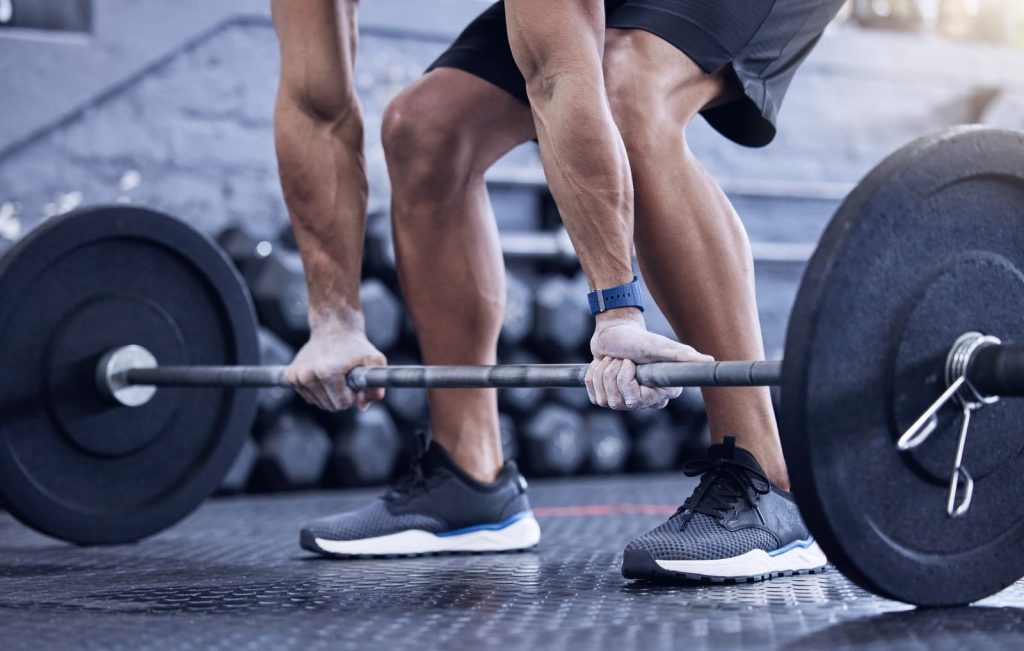
Comparing HIIT and Steady-State Cardio: Which is Better?
Cardiovascular exercise plays a pivotal role in maintaining overall health and fitness. It’s the cornerstone of any well-rounded workout routine, offering a range of benefits such as improved heart health, increased stamina, and weight management.
When it comes to cardiovascular exercise, two primary approaches stand out: High-Intensity Interval Training (HIIT) and steady-state cardio. Each method has its own set of advantages and considerations, making it essential for individuals to choose the one that aligns with their fitness goals and lifestyle.
Before we dive in, it’s worth noting that for those looking to incorporate cardio into their fitness routine, it’s crucial to have access to the right equipment. Dynamo Fitness Equipment, the largest gym equipment store in Australia, offers an extensive range of cardio gym equipment to support your fitness journey.
With showrooms located in Melbourne, Sydney, and Perth, and an accessible online store, Dynamo Fitness Equipment makes it convenient for people across the country to shop for quality gym and cardio equipment. Now, let’s explore the benefits and considerations of HIIT and steady-state cardio to help you make an informed choice for your fitness goals.
Understanding High-Intensity Interval Training (HIIT)
High-Intensity Interval Training, commonly known as HIIT, is a workout method that revolves around short bursts of intense exercise alternated with brief periods of rest or low-intensity recovery. It’s built on the principle of pushing your body to its maximum effort during the high-intensity intervals, then allowing it to recover before the next round.

The core principle of HIIT is to maximize results in a minimal amount of time. By doing so, it triggers several benefits that make it a popular choice for fitness enthusiasts.
Benefits of HIIT:
- Efficiency: HIIT workouts are typically shorter than traditional cardio sessions, making them perfect for those with busy schedules.
- Calorie Burn: HIIT can help you burn more calories in a shorter time due to the afterburn effect, where your body continues to burn calories post-workout.
- Fat Loss: HIIT is known to be effective for reducing body fat and improving lean muscle mass.
- Cardiovascular Health: It enhances cardiovascular endurance, improving heart health.
- Metabolic Boost: HIIT can increase your metabolism, aiding in weight management.
Sample HIIT Workout Routine
Here’s an example of a simple HIIT workout plan that you can follow to experience its benefits:
- Warm-up (5 minutes): Start with light cardio like jogging in place or jumping jacks to prepare your body for the intense intervals.
- High-Intensity Interval (30 seconds): Perform a high-intensity exercise like sprinting, burpees, or jump squats. Go all out, giving it your maximum effort.
- Low-Intensity Recovery (30 seconds): Follow the high-intensity interval with a low-intensity exercise like walking or slow jogging to catch your breath.
- Repeat: Continue alternating between high-intensity and low-intensity intervals for 15-20 minutes.
- Cool Down (5 minutes): Finish with a light cool-down, which may include stretching and deep breathing.
Pros and Cons of HIIT
Advantages:
- Time-Efficient: HIIT workouts are brief but highly effective, making them ideal for busy individuals.
- Effective Fat Burn: They promote fat loss and muscle toning simultaneously.
- Boosted Metabolism: HIIT can elevate your metabolism, aiding in long-term weight management.
Disadvantages:
- Intense: HIIT can be physically demanding and may not be suitable for beginners.
- Potential Injury Risk: The high-intensity nature of HIIT can lead to injury if not done with proper form and technique.
- Recovery Time: It may require more recovery time than steady-state cardio.
Suitability for Different Fitness Levels:
- Beginners: Beginners can incorporate HIIT gradually, starting with shorter sessions and lower-intensity exercises.
- Intermediate: Intermediate individuals can benefit from HIIT as they progress by gradually increasing the intensity and duration of their workouts.
- Advanced: Advanced fitness enthusiasts can include HIIT as part of their routine for variety and continued challenge.
Read Also: Pilates Reformer Exercises
Exploring Steady-State Cardio
Steady-state cardio, also known as continuous aerobic exercise, is a traditional form of cardiovascular training characterized by maintaining a consistent, moderate-intensity effort over an extended period. Unlike HIIT, which involves high-intensity intervals, steady-state cardio involves a sustained, steady pace that keeps your heart rate elevated but within a manageable range.
Benefits of Steady-State Cardio:
- Endurance Improvement: Steady-state cardio enhances endurance and stamina over time.
- Effective for Fat Burn: It’s effective for burning calories and supporting weight loss.
- Lower Injury Risk: It generally carries a lower risk of injury compared to high-intensity workouts.
Sample Steady-State Cardio Workout Routine

Here’s an example of a steady-state cardio workout plan that you can incorporate into your fitness routine:
- Warm-up (5 minutes): Begin with light cardio, such as brisk walking or cycling, to prepare your body for the main workout.
- Steady-State Cardio (20-60 minutes): Choose an activity like jogging, cycling, swimming, or using a treadmill or elliptical machine. Maintain a moderate intensity where you can sustain a conversation but still feel your heart rate elevated.
- Cool Down (5 minutes): Gradually reduce your intensity, allowing your heart rate to return to its resting rate. Finish with stretching exercises to promote flexibility.
Pros and Cons of Steady-State Cardio
Advantages:
- Sustainable: Steady-state cardio is more sustainable for longer durations, making it suitable for those who prefer extended workouts.
- Safe for Most: It is generally safe for most fitness levels, including beginners and individuals with certain medical conditions.
- Heart Health: Steady-state cardio can improve cardiovascular health over time.
Disadvantages:
- Time-Consuming: Longer workouts may not be ideal for those with busy schedules.
- Plateau Risk: Progress may plateau if you don’t periodically increase intensity or duration.
- Lower Caloric Burn: It typically burns fewer calories per minute compared to HIIT.
Suitability for Different Fitness Levels:
- Beginners: Steady-state cardio is an excellent starting point for beginners to build a fitness foundation.
- Intermediate: Intermediate individuals can use steady-state cardio for extended fat-burning sessions and endurance improvement.
- Advanced: Advanced fitness enthusiasts may incorporate steady-state cardio as active recovery or as part of a more comprehensive training plan.
Steady-state cardio offers a reliable way to improve cardiovascular fitness and support weight management, making it a valuable addition to any fitness routine. Its suitability for different fitness levels makes it accessible to a broad range of individuals. As with any workout program, it’s crucial to select the type of cardio that aligns with your goals and preferences.
Key Differences Between HIIT and Steady-State Cardio
Duration and Intensity:
- HIIT: HIIT workouts are short and intense, typically lasting 15-30 minutes. They involve short bursts of high-intensity exercise.
- Steady-State Cardio: Steady-state cardio sessions are longer, ranging from 30 minutes to several hours, with a consistent, moderate intensity throughout.
Caloric Burn and Fat Loss:
- HIIT: HIIT burns more calories per minute due to the high-intensity intervals. It’s effective for fat loss and post-workout calorie burn.
- Steady-State Cardio: While it burns calories, the rate is lower than HIIT. It’s still effective for fat loss but may require longer sessions to achieve similar results.
Impact on Cardiovascular Health:
- HIIT: HIIT can quickly improve cardiovascular health by increasing heart rate and oxygen consumption during intense intervals.
- Steady-State Cardio: Steady-state cardio provides a sustained cardiovascular workout that gradually improves heart health over time.
B. How to Choose Between HIIT and Steady-State Cardio
- Considerations for Fitness Goals:
- HIIT: Choose HIIT if your primary goal is to maximize calorie burn in a short time, improve cardiovascular fitness rapidly, and include variety in your workouts.
- Steady-State Cardio: Opt for steady-state cardio if you prefer longer, steady workouts, want to build endurance, or have specific goals like training for a marathon.
- Lifestyle and Time Constraints:
- HIIT: If you have a busy schedule and can commit to shorter, intense workouts, HIIT may be more convenient.
- Steady-State Cardio: Steady-state cardio suits those with more time available for exercise and a preference for consistent, moderate-paced routines.
- Health and Injury Considerations:
- HIIT: HIIT can be demanding and may not be suitable for individuals with certain medical conditions or joint issues. Consult a healthcare professional before starting.
- Steady-State Cardio: It generally carries a lower risk of injury and is often recommended for those recovering from injuries or with medical limitations.
Ultimately, the choice between HIIT and steady-state cardio depends on your individual preferences, fitness goals, and lifestyle. Some individuals may find that a combination of both methods provides the best balance, allowing for variety in their workout routine while addressing specific fitness objectives. Always listen to your body and consult with a fitness expert or healthcare professional to make an informed decision tailored to your needs.
Tips for Maximizing Results with Either Approach
Nutrition Tips for Cardio Workouts:
- Stay Hydrated: Proper hydration is key for optimal performance during both HIIT and steady-state cardio. Drink water before, during, and after your workout to stay hydrated.
- Pre-Workout Fuel: Consume a balanced meal or snack 1-2 hours before your cardio session. Include complex carbohydrates for sustained energy and lean proteins to support muscle repair.
- Post-Workout Nutrition: After your workout, have a meal rich in protein and complex carbohydrates to aid recovery and replenish glycogen stores.
Avoiding Common Mistakes:
- Overtraining: Avoid excessive HIIT sessions, as they can lead to burnout and overtraining injuries. Balance intense workouts with rest and recovery days.
- Improper Form: Maintain proper form during exercises to prevent injury. Whether it’s a sprint in HIIT or a long run in steady-state cardio, technique matters.
- Ignoring Rest: In both approaches, recovery is crucial. Allow your body to recover between sessions to prevent fatigue and reduce the risk of injury.
- Skipping Warm-Up and Cool-Down: Always start with a warm-up to prepare your body and end with a cool-down to prevent muscle soreness and aid recovery.
These insights and tips from experts can help you make the most of your HIIT and steady-state cardio workouts. Remember that success in your fitness journey often relies on a combination of the right exercise approach and proper nutrition and recovery practices.
Bottom Line
In the quest for better health and fitness, the choice between High-Intensity Interval Training (HIIT) and steady-state cardio is a significant decision. Both approaches offer unique benefits, and the right one for you depends on your goals, lifestyle, and individual preferences.
While HIIT delivers quick and intense results, steady-state cardio provides a reliable path to endurance and cardiovascular health. The key is to strike a balance that aligns with your objectives.
Ready to take your fitness to the next level? Explore Dynamo Fitness Equipment’s extensive collection of gym equipment and squat rack today. Whether you’re looking to equip your home gym or upgrade your existing setup, Dynamo Fitness Equipment has you covered.
